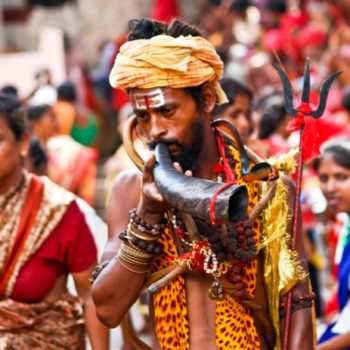Vajrapāṇi (Sanskrit: “Vajra in [his] hand”) also called Vajrasattva, is one of the earliest-appearing bodhisattvas who arose from the power of the Sakyamuni’s enlightenment. It is believed that on attained the condition of Samyakasambuddha, three spiritual beings were created who would always accompany the Buddha. These three were Mañjuśrī who represents the wisdom of the Buddhas’, Avalokiteśvara manifests the Buddhas’ immense compassion, and Vajrapāni manifested the strength and power of the Buddha.
Vajrapāni is one of the earliest Dharmapalas (dharma protectors) of Mahāyāna Buddhism and also appears as a deity in the Pāli Canon of the Theravāda school. He is worshiped in the Shaolin Monastery, as well as in Tibetan Buddhism. Manifestations of Vajrapāni can also be found in many Buddhist temples in Japan as Dharma protectors called Nio. Vajrapani’s story of origin as the Shaolin protector comes from a story about the invasion of the Red Turbans.

The story goes that bandits invaded the monastery, and a lowly kitchen worker, barefoot and unkempt, took up a fire poker against the invading bandits. This simple laborer leapt into the kitchen fires, and then when he leapt back out, he had transformed into a fearsome staff-wielding deity. Then, transforming to such an enormous size that he straddled the holy Mt Song and the Imperial Fort five miles away, he was able to drive back the invaders with his gigantic staff. This led to a transformation in the image of Vajrapani in the Shaolin Temple. Before, Vajrapani had been depicted as a vajra carrying deity, but later Shaolin depictions show him bearing a staff, such as is used by Shaolin monks.
against the invading bandits. This simple laborer leapt into the kitchen fires, and then when he leapt back out, he had transformed into a fearsome staff-wielding deity. Then, transforming to such an enormous size that he straddled the holy Mt Song and the Imperial Fort five miles away, he was able to drive back the invaders with his gigantic staff. This led to a transformation in the image of Vajrapani in the Shaolin Temple. Before, Vajrapani had been depicted as a vajra carrying deity, but later Shaolin depictions show him bearing a staff, such as is used by Shaolin monks.
In some of the earliest texts Vajrapāni is identified with Indra of the Veda-s the legend being that when Buddha ascended to the Trāyastriṃśa heaven (abode of 33 gods) and preached the Dharma, Indra and Brahma readily agreed to become protectors of Buddha Dharma and started automatically helping the Buddha’s followers. Also his arms are often depicted with naga-s as ornaments because he is said to have protected many naga-s from the wrath of Garuda.
In Tantric Buddhism, Vajrapāni’s bija mantra is said to be hūṃ.
Feature photo: Shukongōshin or vajra wielding deity, another name for Vajrapani, is popular in Japan as the Guardian. Photo depicts Shukongōshin at the Todaji Nara temple. Todaji was one of the 7 most powerful Buddhist temples in the city of Nara, Japan.


